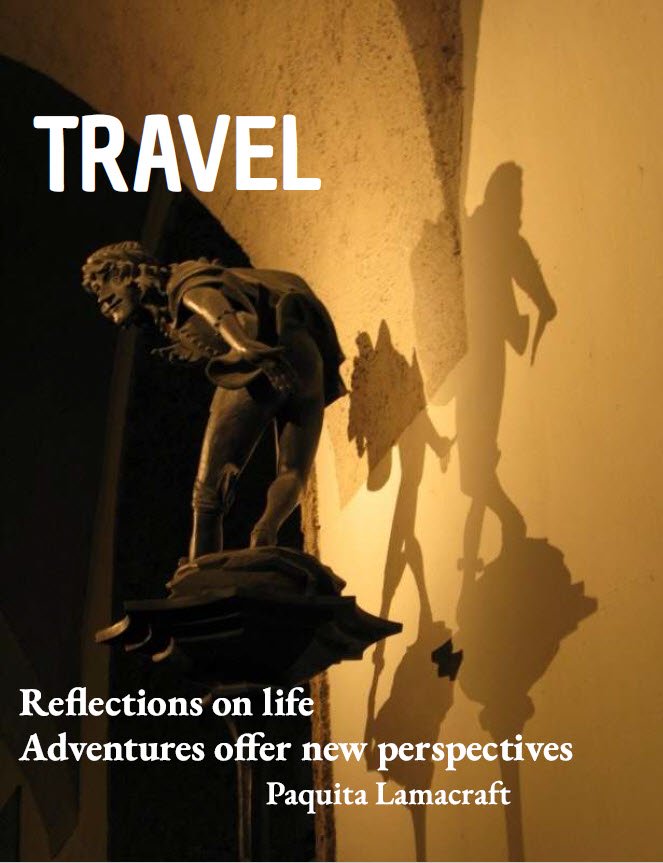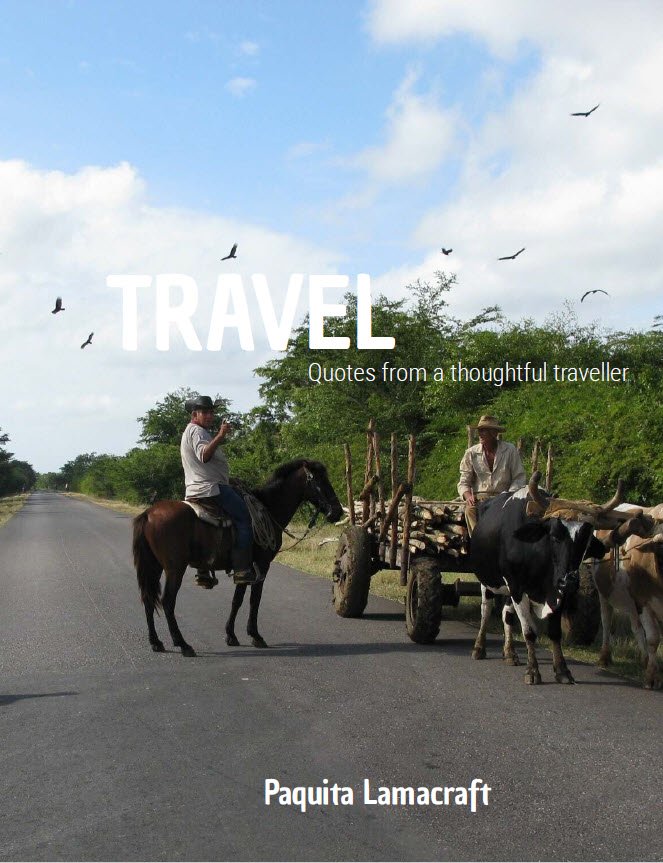Abu Dhabi:
Riding the desert dunes
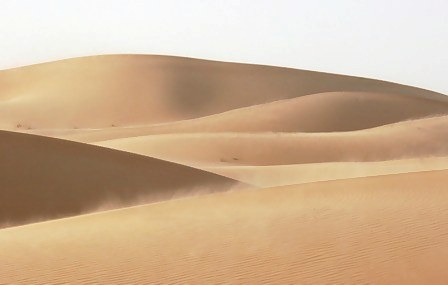
My first insight into the deserts of the Middle East was from reading the aptly named biography of Lady Jane Digby: 'A Scandalous Life'.
The book is aptly titled, because this aristocratic beauty and debutante of 1824 defied all the social mores of her time. Her relationships after her divorce (THE scandal) reveal more of an interest in men of passion and interest, than of social acceptability.
Lady Jane toured the desert and fell under its spell, finally marrying Sheikh Medjuel el Mezrab and – unusually for a non-Bedouin - becoming accepted - and loved - by his Bedouin tribesmen.
A very capable horse rider and animal lover, able to learn languages of the lands where she lived - and to get to know the people on equal terms, her story brought the desert alive to me.
I think I would have liked her.
My own experience of the desert in Abu Dhabi was exhilarating but too brief.
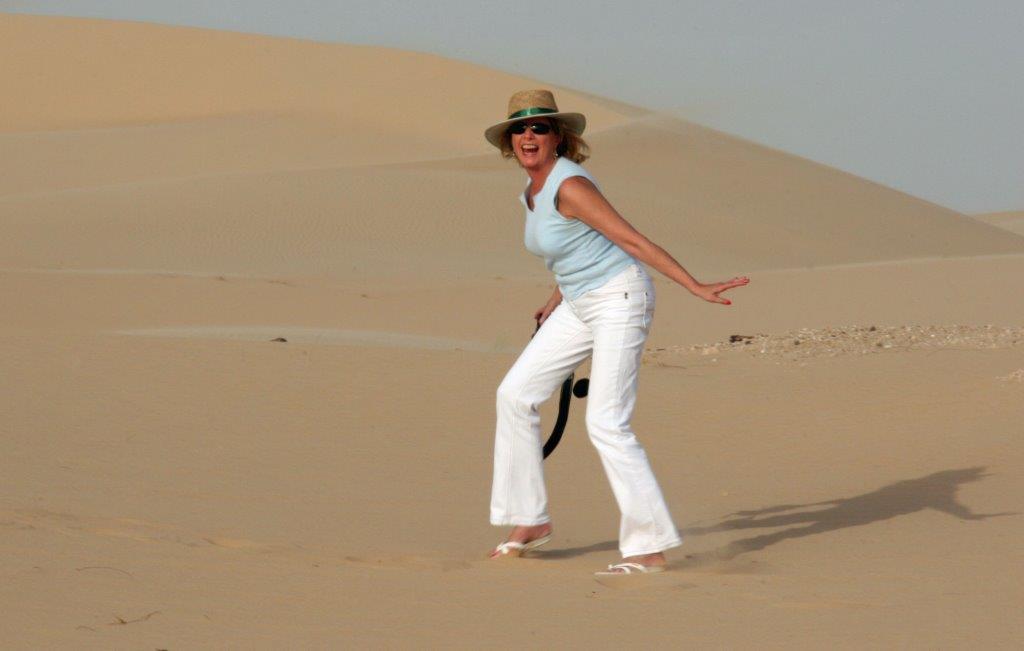
Abu Dhabi Dune Bashing by 4WD
Although Jane’s desert was closer to Damascus than Abu Dhabi, when my colleague invited me to join their weekend desert trip 'dune-bashing', I didn’t hesitate.
The road out of Abu Dhabi has sporadic palm plantations, but is otherwise rocky and barren, with dunes moving always closer to the highway.
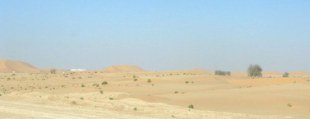
At each overpass there are carefully tended patches of green in an attempt to hold back the sands, but as you drive and witness more and more of this battle between the ribbon of bitumen and the sand, you get the sense that in the end, the sand will win.
On arrival at the point where we were to go off-road, the drivers let air out of their tyres to give them a flatter footprint and better traction on the sand.
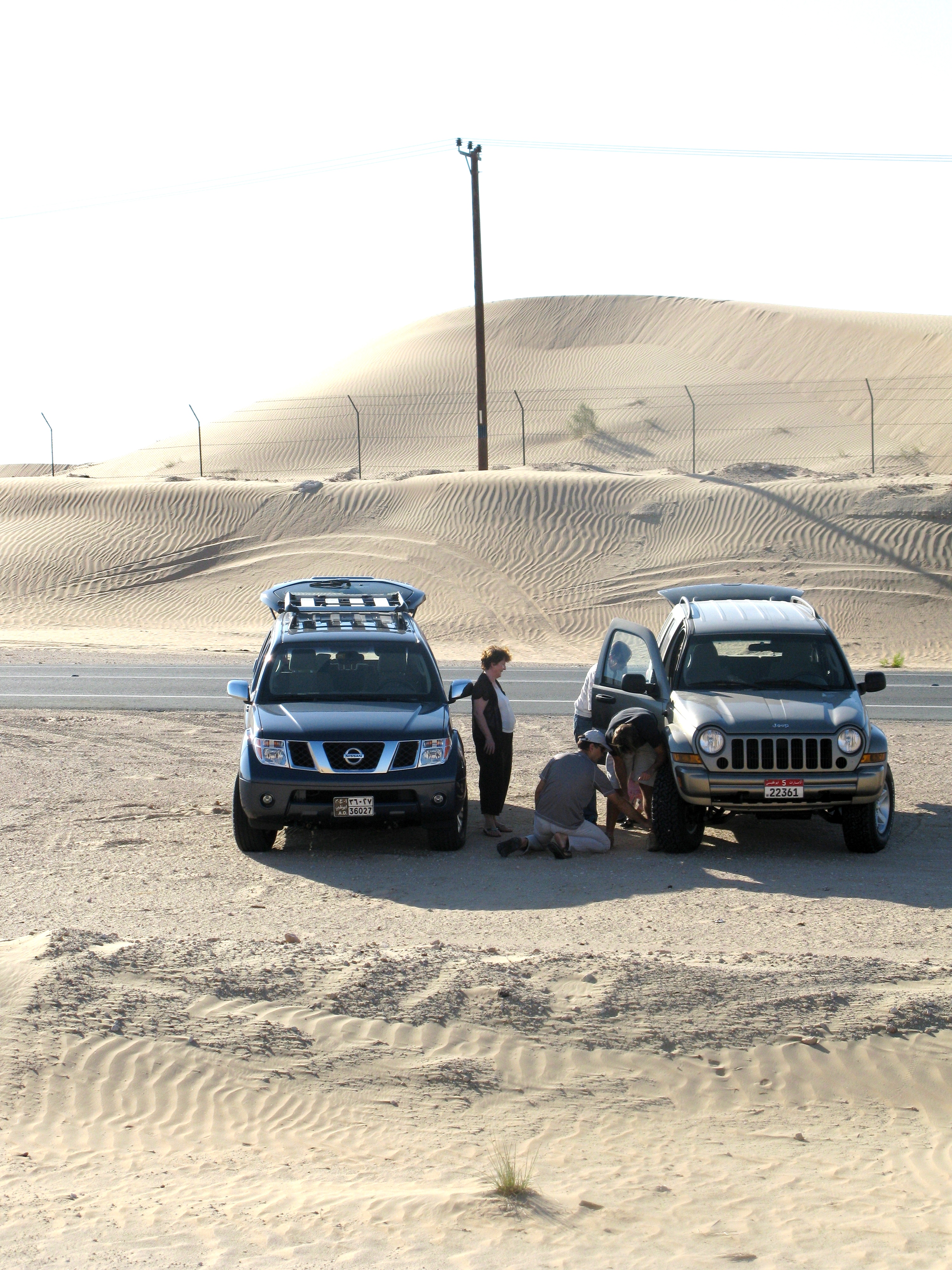
It is a rule to never travel in an unaccompanied vehicle – for reasons that became even more compelling as the trip unfolded.
The safety of the group depends to a large extent upon the leader. He (or she) must find the route. The other vehicles follow - one at a time.
The next vehicle doesn’t start until the last is clearly visible and out of the way – just in case it gets stuck, has to work its way out of a tough spot, or rolls - and the next vehicle drives into it.
Before starting out into the dunes themselves, the vehicles amassed at a given just 'off-road' point.
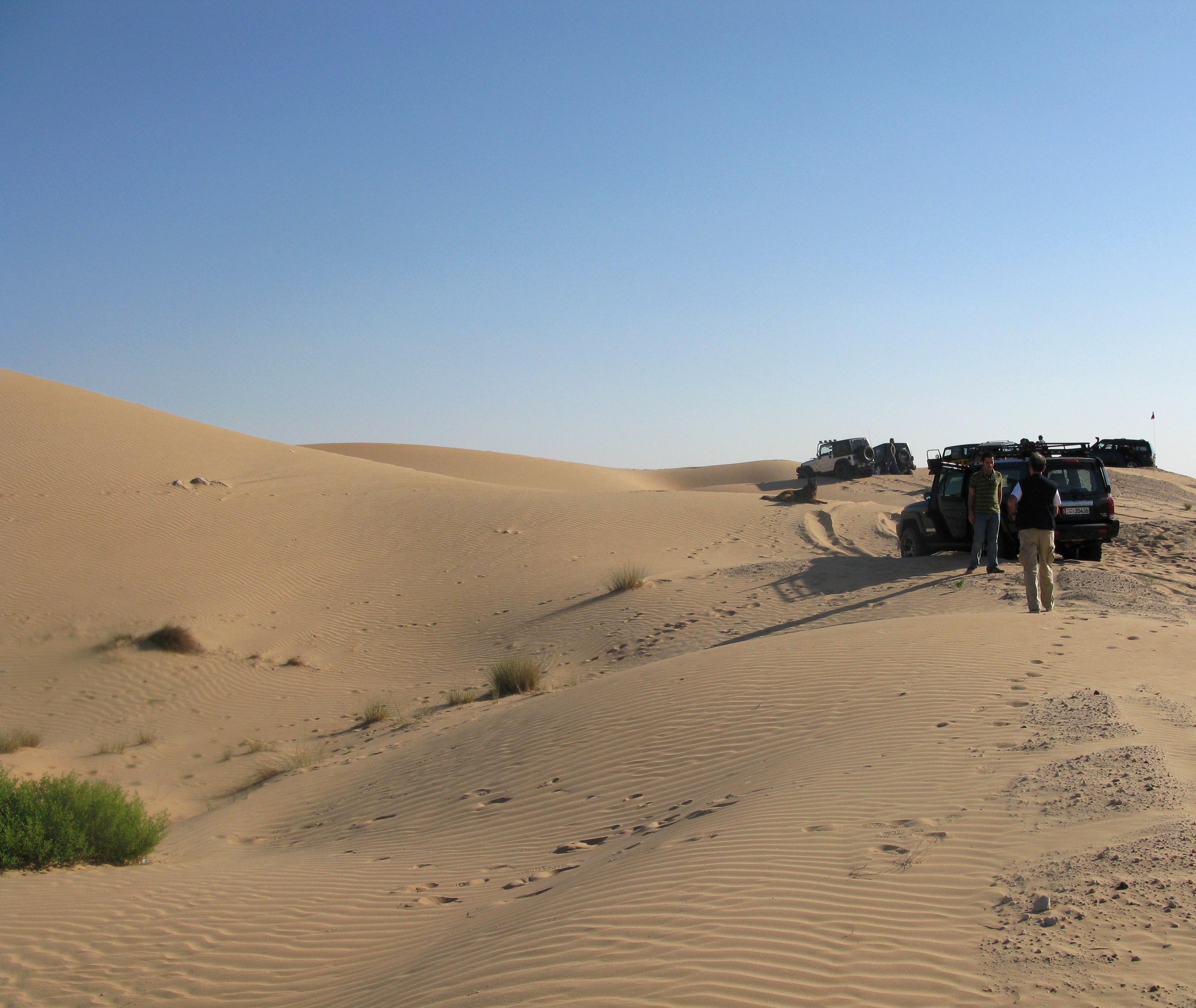
After a group briefing, we set off.
I was lucky enough to be with a driver who was completely at home with his vehicle. We were second after the leader and although I braced myself with knees tight against the door, despite the seat belt, I was still thrown about the cab as the vehicle 'surfed' the sands.
If you had no confidence in the driver it wouldn’t be any fun at all.
I was very glad I was in this particular vehicle, with this particular driver.
Riding and sliding on the dunes
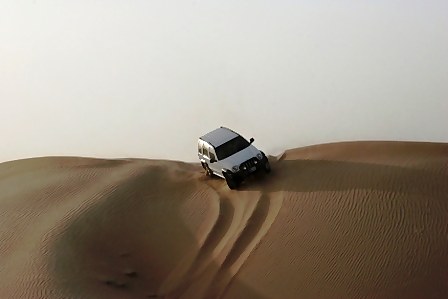
The ride up, over and down the dunes is not for the faint-hearted, but here as we rolled over the dune top - exhilarating.
The low range of the 4WD growled to the top of the dune, and then half-drove and half-rolled over the knifelike edge top, to half-slide, half-skid down the other side.
The trick is to be fast enough down to still keep control, and yet still to have enough speed for the upward climb on the slope of the next dune.
In the front passenger seat it was at once thrilling and slightly terrifying. Watching the driver was like watching a cowboy on a cutting horse culling out a particular beast from the herd. There was that same sense of unique oneness of man and horse.
Our driver and the car seemed equivalent.
As we waited for the other vehicles, I asked how he had learned.
Practice - and scaring himself to death, he said!
He also said his wife was actually better at this, than he.
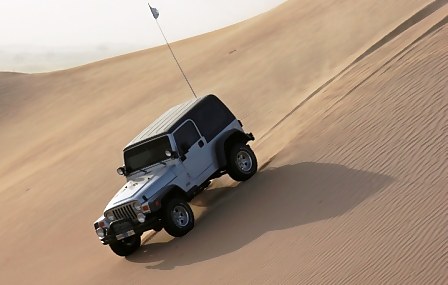
In our group, each driver had to signal over walkie-talkies that they were starting, and then that they were clear, before the next vehicle could get ready to follow.
As we waited for everyone to reach the next point there was time to get out and admire the view.
Abu Dhabi desert views
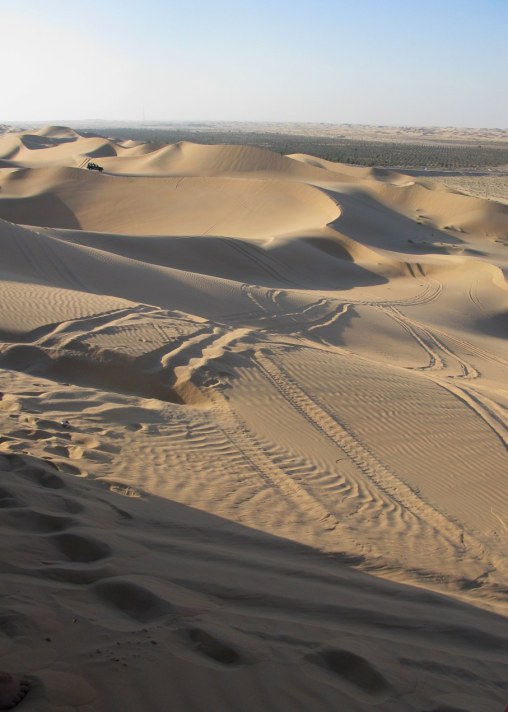
At first we were still on the edge of the sands and as the last vehicle waited for the “All clear”, we could see desert houses and palm plantations, drip-fed with water.
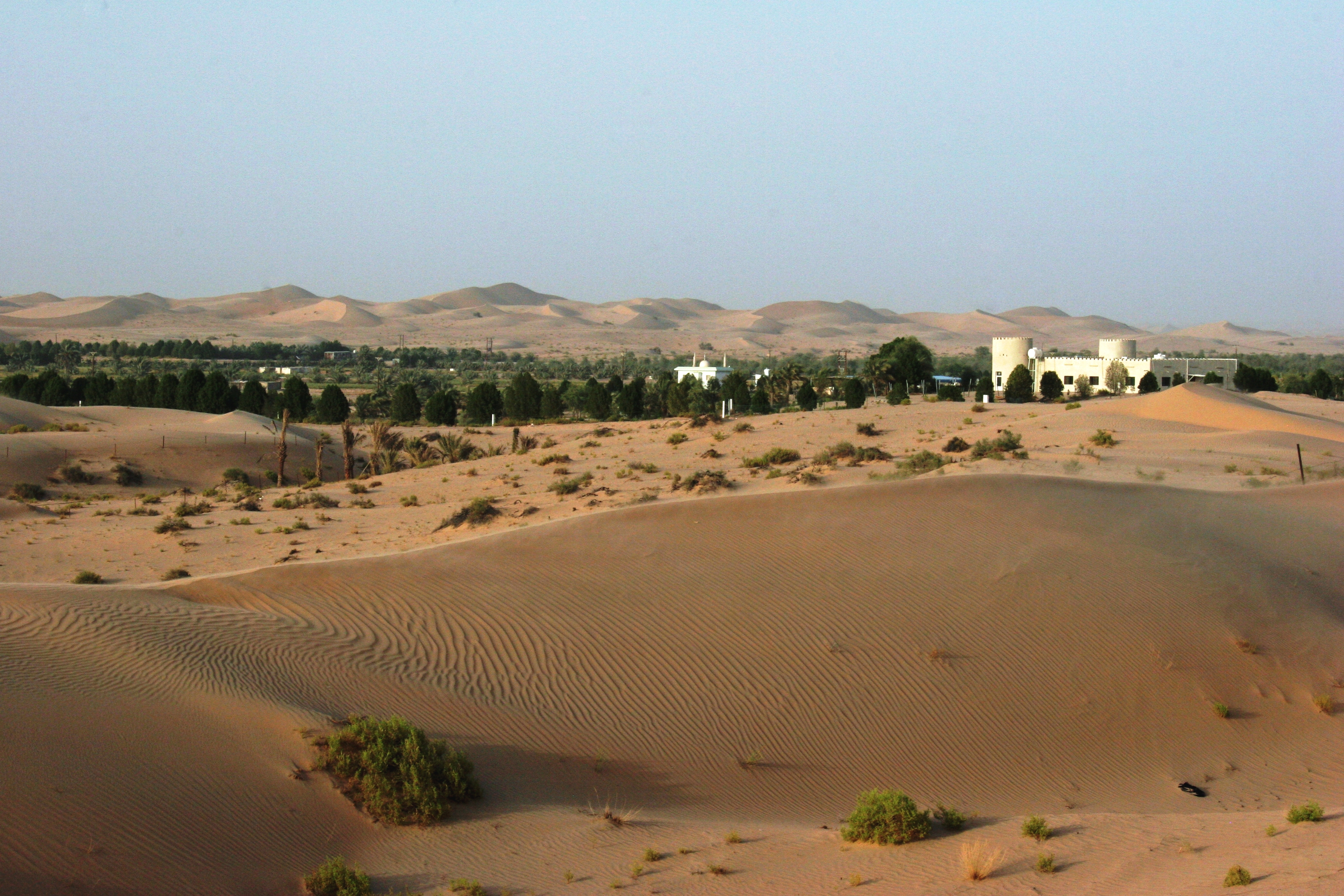
Looking in another direction the scene was more arid.
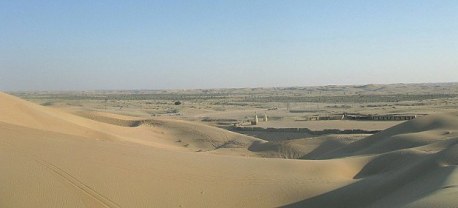
Our tracks were fast becoming swept away by the wind as we looked back over our climb.
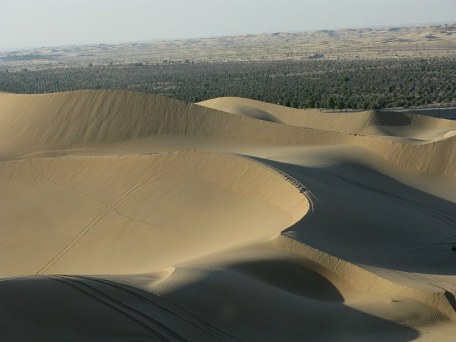
Scanning where we had just come from, it was impossible to see the other vehicles.
The importance of the walkie-talkies was obvious.
There is no other way to know who, or what, lies over the top as you climb these walls of sand to crest to flow down the other side.
Once over the top, changing direction to avoid landing on top of a stalled or overturned vehicle below just isn't an option: you are committed - and your velocity increases due to the steepness of the angle down which you are travelling.
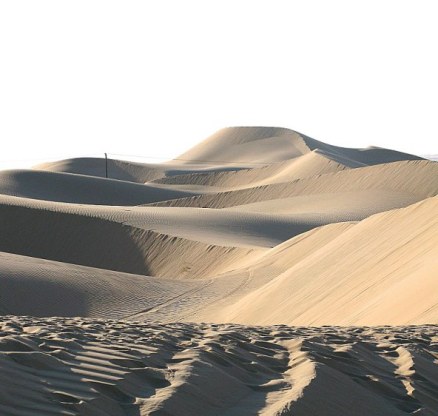
The wind was constant as we headed for inner dunes that are higher, and more unforgiving on the unwary driver.
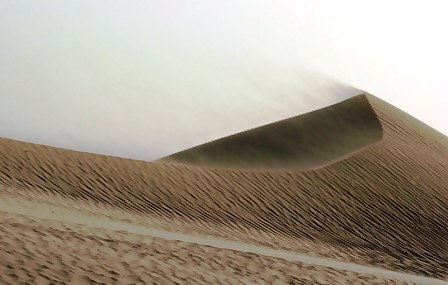
Desert travel transport - ancient and modern
On the way to the high dunes we passed this penned camel at a crossroad of desert tracks.
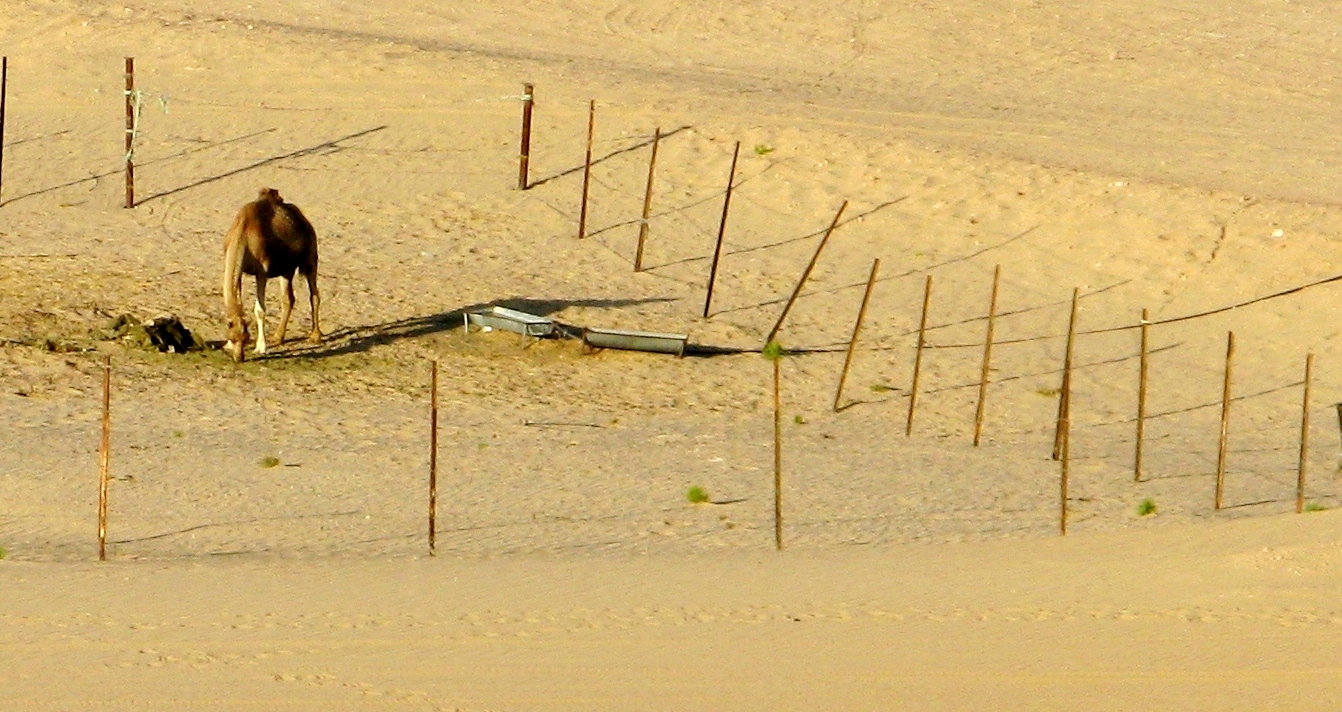
Further along we saw, side-by-side, the two staples of desert travel: camels and a 4WD.
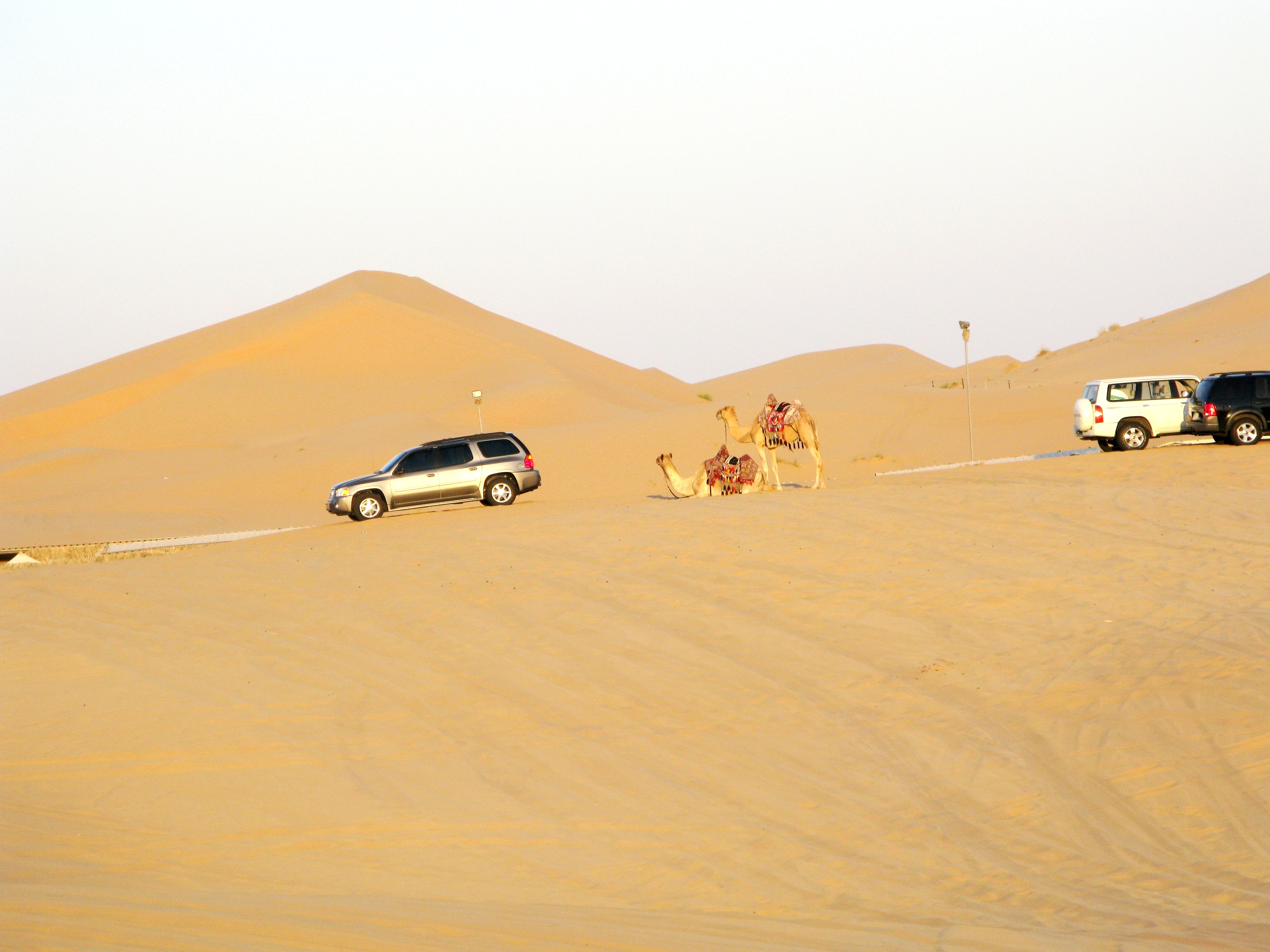
Marks of the desert wind
The dunes reflect the markings of the wind, with ever changing patterns- now runnels, then ridges, then criss-cross hair-fine carved channels, and further along deeper ones as wide as a hand.
Some ridge tops were etched precisely against the sky - others were being dusted into reformed shapes by the wind and the whispers it brought from other people and other lands.
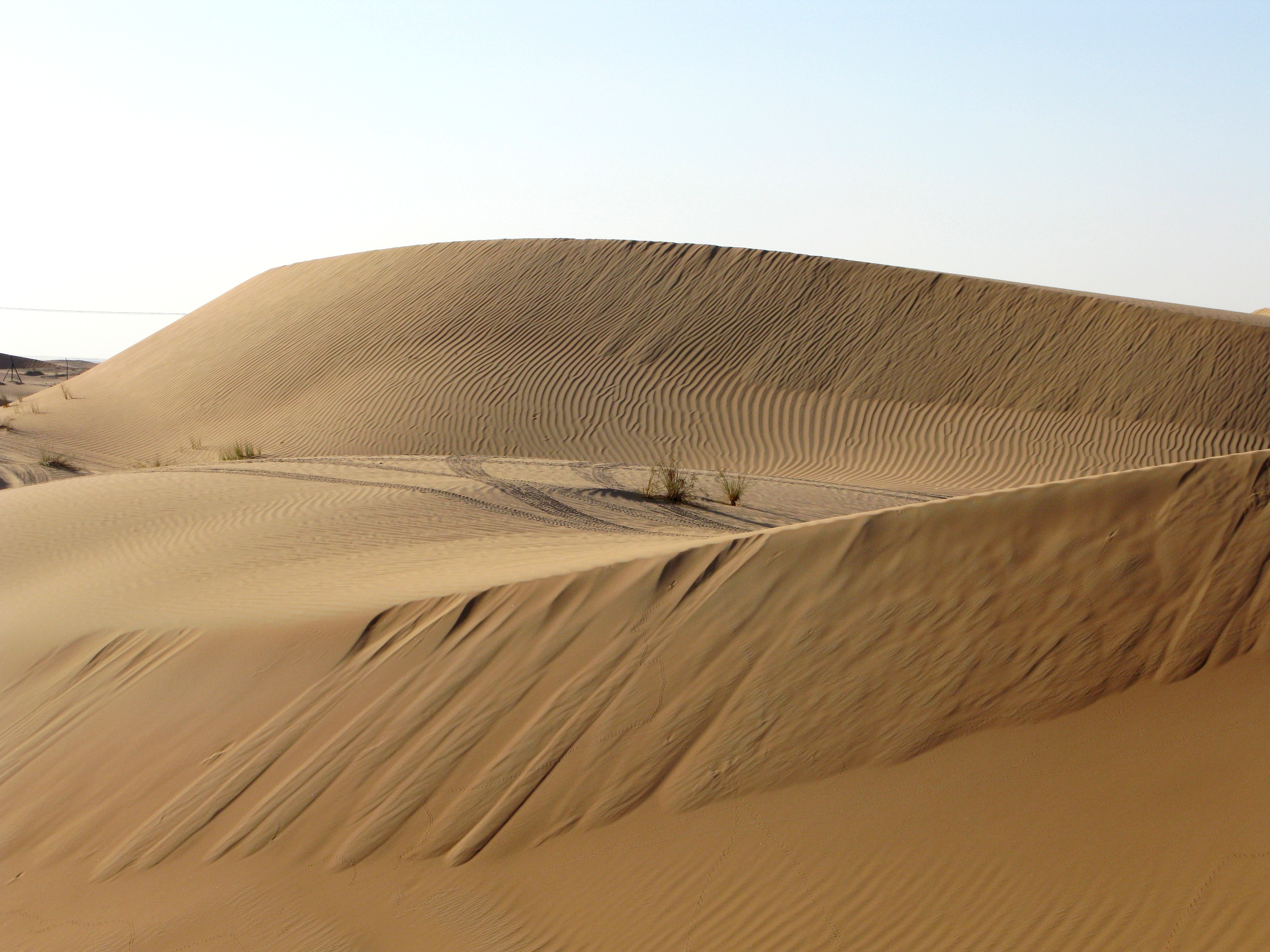
There were also tracks left behind by local residents.
I don't know to which species these avian footprints belong. It could be one of the many song birds, or of the Sooty Falcon.
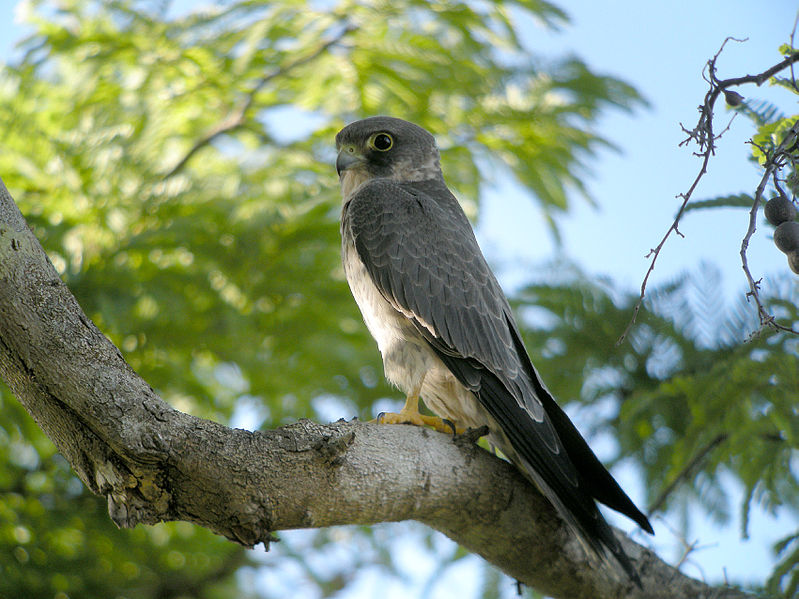
Photo courtesy of Wikimedia Commons and Frank Vassey who photographed this one in Madagscar This file is licensed under the Creative Commons Attribution 2.0 Generic license.
These handsome birds are great migratory travellers. This one was photographed in Madagascar, but they transverse the deserts of United Arab Emirates (UAE) en route to nesting grounds in Oman.
One tends to think of a desert as being devoid of life, but this is not so.
The UAE abounds in bird life: some just winter visitors.
The country is on the crossroads of bird migration from across all of Europe: from Asia to the foothills of the Himalaya and North Africa. It is also the route of birds travelling from Cyprus, Egypt, Iraq, Iran, Israel, Jordan, Lebanon, the Palestinian territories, Syria, Turkey and Afghanistan.
Quite an international array.
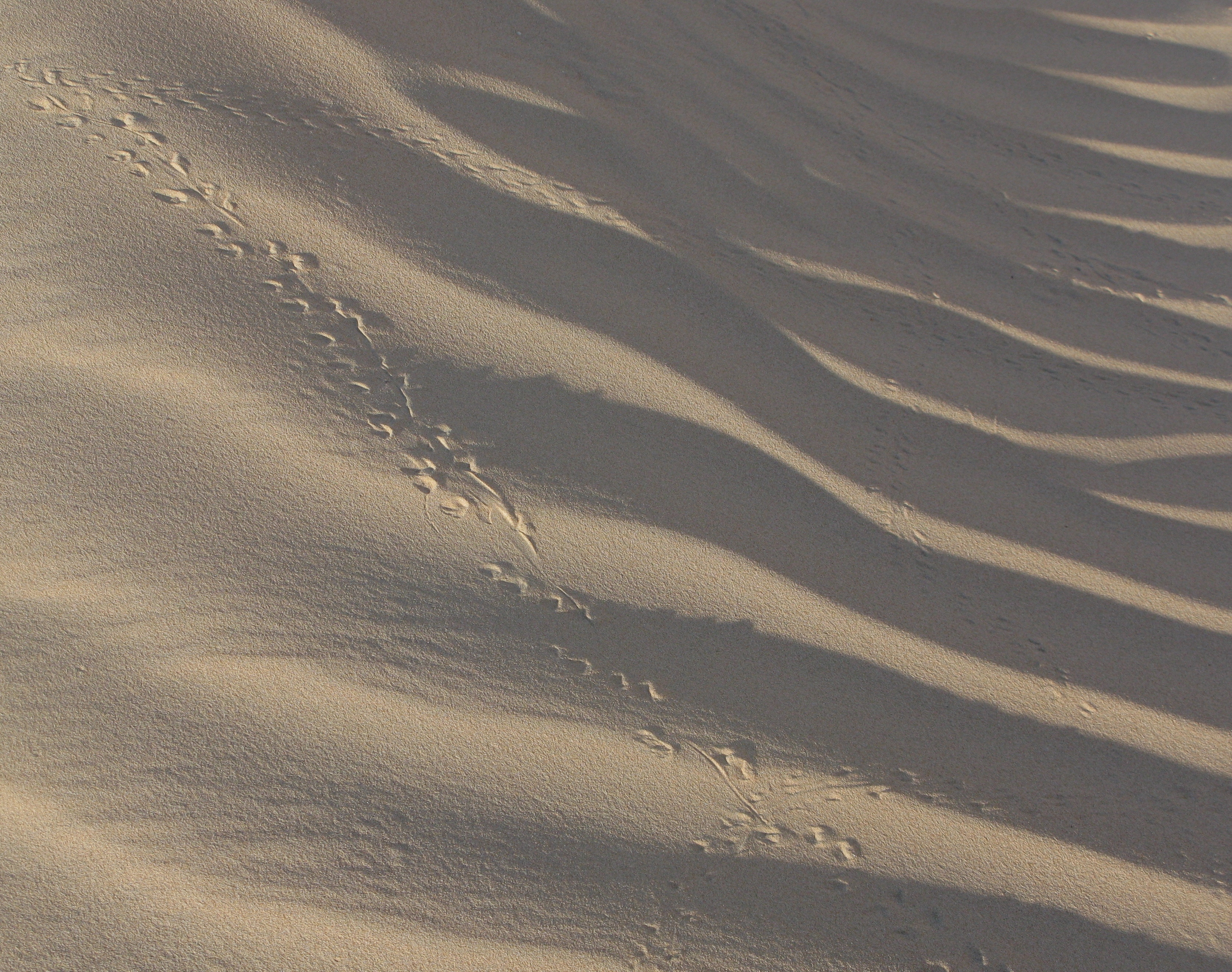
The other best known native of the desert - preferring the hard sand areas between the dunes where their speed and agility offers them some safety, are the white oryx. These remarkably beautiful animals were hunted to extinction by teams of hunters employed in the oil business in the desert regions of the UAE and Arabia. We can thank Phoenix Zoo for starting the breeding program that saw the oryx dispersed between American zoos and then finally reintroduced to their native habitat.
Sadly, the sanctuary where they thrived in Oman was subsequently opened up for oil exploration, with the result that the sanctuary is the only one to ever be removed from the UNESCO World Heritage List.
It seems that humans working in the oilfields and the oryx have a collision course. There are reportedly now only four breeding pairs left in Oman.
In the UAE, by 1972 the oryx was hunted to extinction in the wild.
However, in 1968, the Al Ain Zoo was created by Sheikh Zayed bin Sultan Al Nahyan to conserve threatened UAE wildlife like the oryx. They are now over 1000 animals that have been reintroduced to the wild .
We recognise the elegant shape of the oryx as the state emblem of Qatar resplendant on the tail fin of Qatar Airways aircraft, but it is actually the national animal of the UAE.
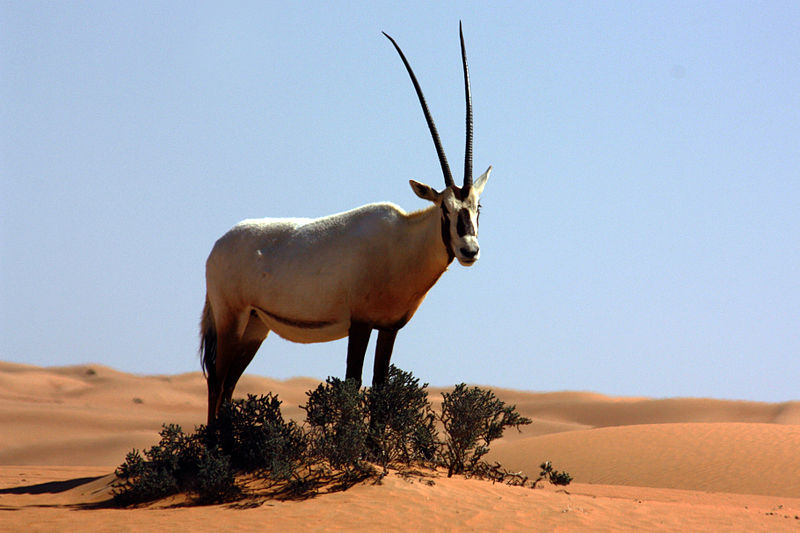
Photo courtesy of Wikimedia Commons and Charls J Sharp.This file is licensed under the Creative Commons Attribution-Share Alike 3.0 Unported license.
These elegant animals, who sometimes lose one horn in battle, have been often thought to be the source of the myth of the unicorn.
In Celtic mythology the unicorn represents purity, innocence, and power. There is a saying that goes like this: "Never lose your sense of wonder, for that's where the unicorn lives."
The desert home of the oryx filled me with wonder. I think the film director David Lean summed it up. After filming Lawrence of Arabia he said:
“When you’re in the desert, you look into infinity…. It makes you feel terribly small, and also in a strange way, quite big.”
Shifting sands of the 'Empty Quarter'
We looked back frequently at where we had been, and as quickly as they were made, the winds started to erase our tracks.
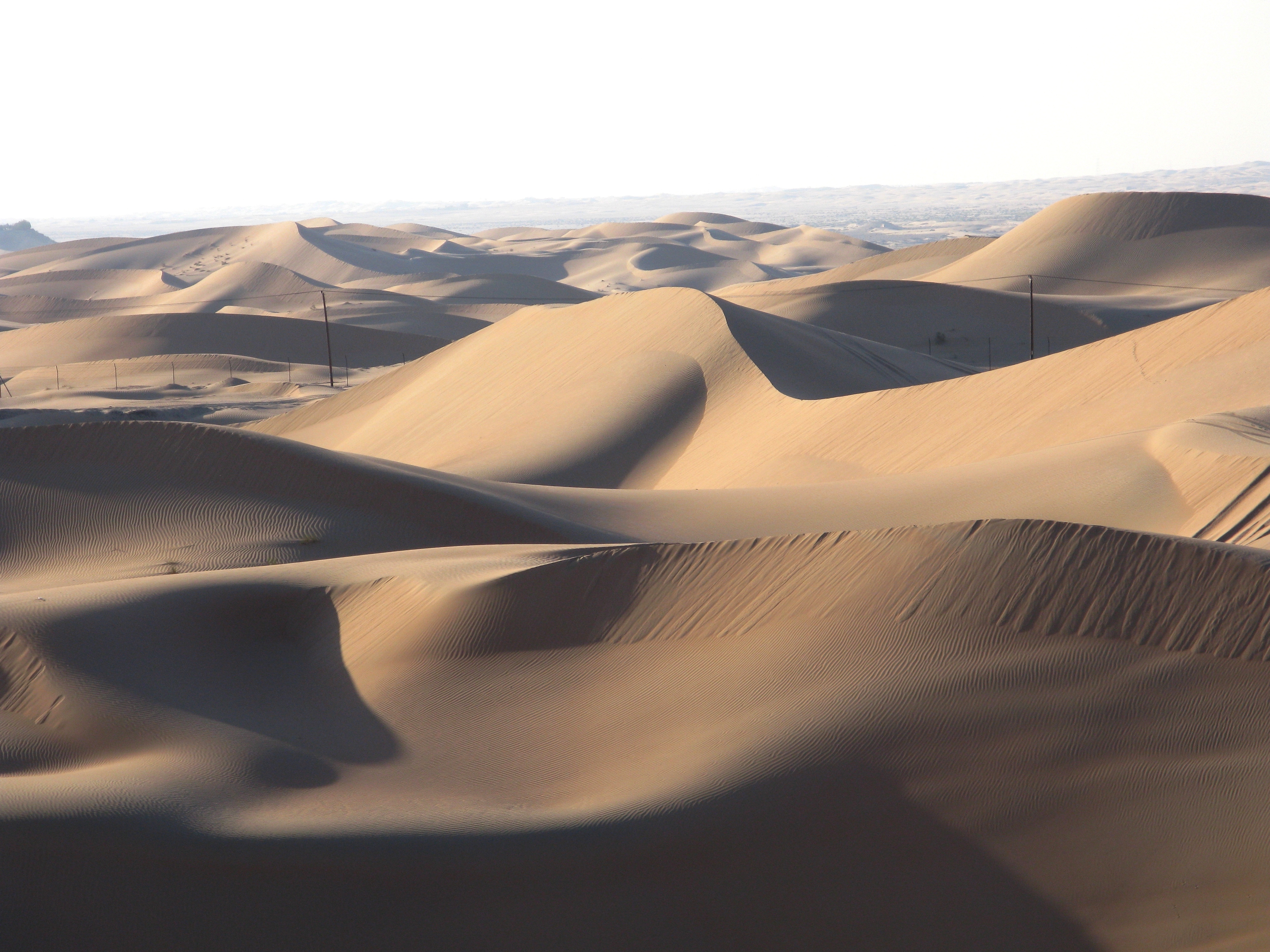
I understood why the Bedouin refer to this as Rub' al Khali - The Empty Quarter.We were just on the very edge of it, for it spans an area 1,000 km long (620 miles) and 500 km wide (310 miles).
These dunes can reach up to 250 metres (820ft) high.
Englishman Wifrid Thesinger crossed the wider area of Rub' al Khali several times. I had read of these adventures - perilous at the time for he was an infidel whose life would have been at risk if discovered as such.
Thesinger loved the desert and this reflects in the way he writes of his trips in his book Arabian Sands. For anyone wishing to understand more about the region, it is a fascinating read of adventure and insight. Thesinger's memories of meeting Sheik Zayid Sheikh Zayed bin Sultan Al Nahyan reflect the character of this truly remarkable man who would manage the inter-tribal challenges as new nations were formed.
Sheik Zayid was to be the founding leader of United Arab Emirates and to foresee and plan the development of the most remarkable city of Abu Dhabi.
When Thesiger met him, Zayid was about thirty and was living in a mud fort with walls about 3metres high (10ft). From here, he acted as mediator and trusted judge in complaints between tribesmen.
Thesinger stayed with him for a month and they hunted together with falcons in sands just like these.
The Bedu had great respect for Zayid and as a great compliment told Thesinger:
"He knows about camels, can ride like one of us, can shoot, and knows how to fight."
Zayid ruled through sheer force of personality and had one of the most revered camels in Oman, called 'Ghazela' - the gazelle.
It was a real tribute to an Englishman when Thesinger was lent this fine steed.
Modern transport
does not have a camel's instinct
Our steeds were sturdy, but less trustworthy.
Our steed relied solely upon the skill of the driver without a camel's intuitive understanding of the terrain.
Finally, we were at the highest dune on our route.
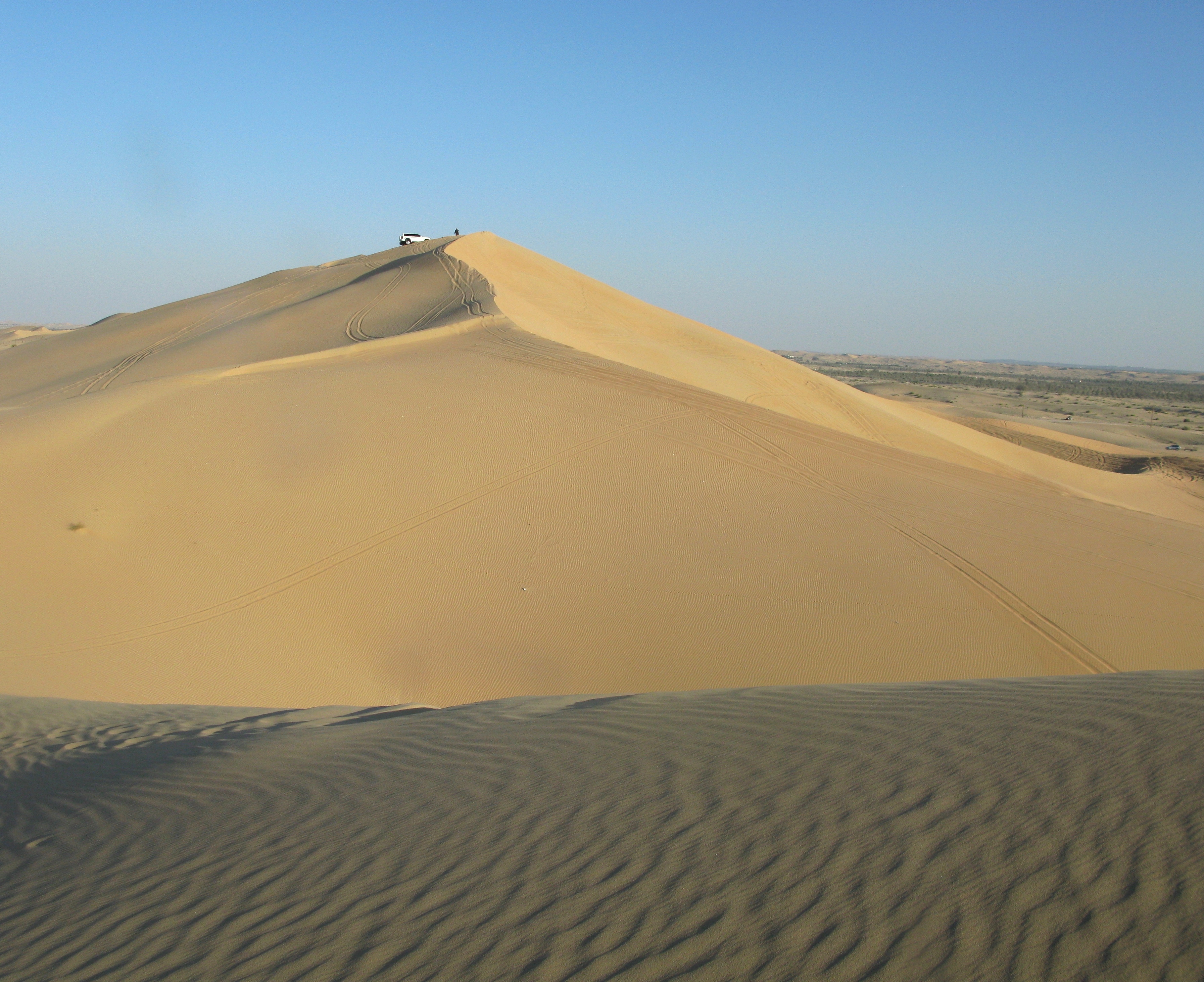
It is hard to get a dimension of the steepness of the gradients - but here in this picture below, I am on the crest of the dune, while one of the vehicles travels below, almost literally straight down.
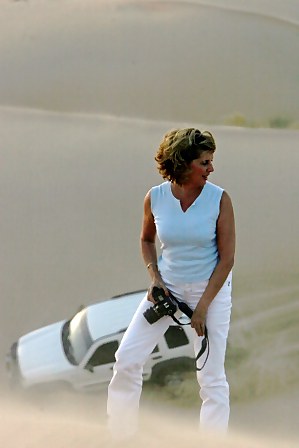
The colours of the sands vary.
As we travelled, the light changed, as did the amount of wind-borne sand.
Depending upon the filtering of light, the sand colour varied from glaring greyish-white to red or yellow ochre. The dunes were either starkly outlined with precise edges, or softened by the wind into pastels, so it was like seeing them in soft focus. It all depended upon the direction of your gaze and its perspective relative to the sun.
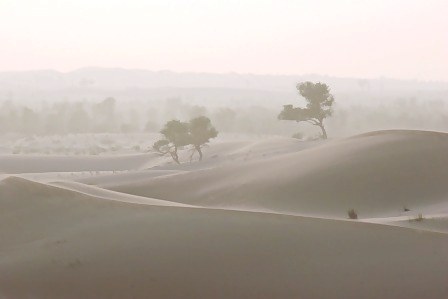
The Bedouin heritage
I found that the desert was a place that whispered of things past and things possible: a place where dreams drift like mirages out from your soul to dance on the winds and tempt you forward.
I had somehow not counted on the wind. It carries with it the dreams of others, their losses and their joys - and so it forms afresh not just the dunes over which it plays, but also those whom it touches.
The Bedouin say:
When you sleep in a house
your thoughts are as high as the ceiling,
when you sleep outside
they are as high as the stars.
Having been so affected by the desert, it was strange that when I was in Doha, Qatar, a very charming Sheikh executive of the client company said to me:
“Paquita, now that we have finished our business discussion – I want to ask how you come to have an Arabic name”.
I responded that I didn’t know I did, for I had always known it as a 'pet' name for Francesca in Spanish, with the equivalent in Mexican being 'Chiquita'.
I was assured that it was, indeed, Arabic, and in response wondered aloud if perhaps the name came with the Moors to Spain.
In the desert Industrial City of Ras Laffan with its refineries and gas plants, I was again asked this question - and this time told that it certainly was an Arabic name, but an old Bedouin name.
It gave me something to think about, here in the desert as the sun glowed hotly into a molten horizon.
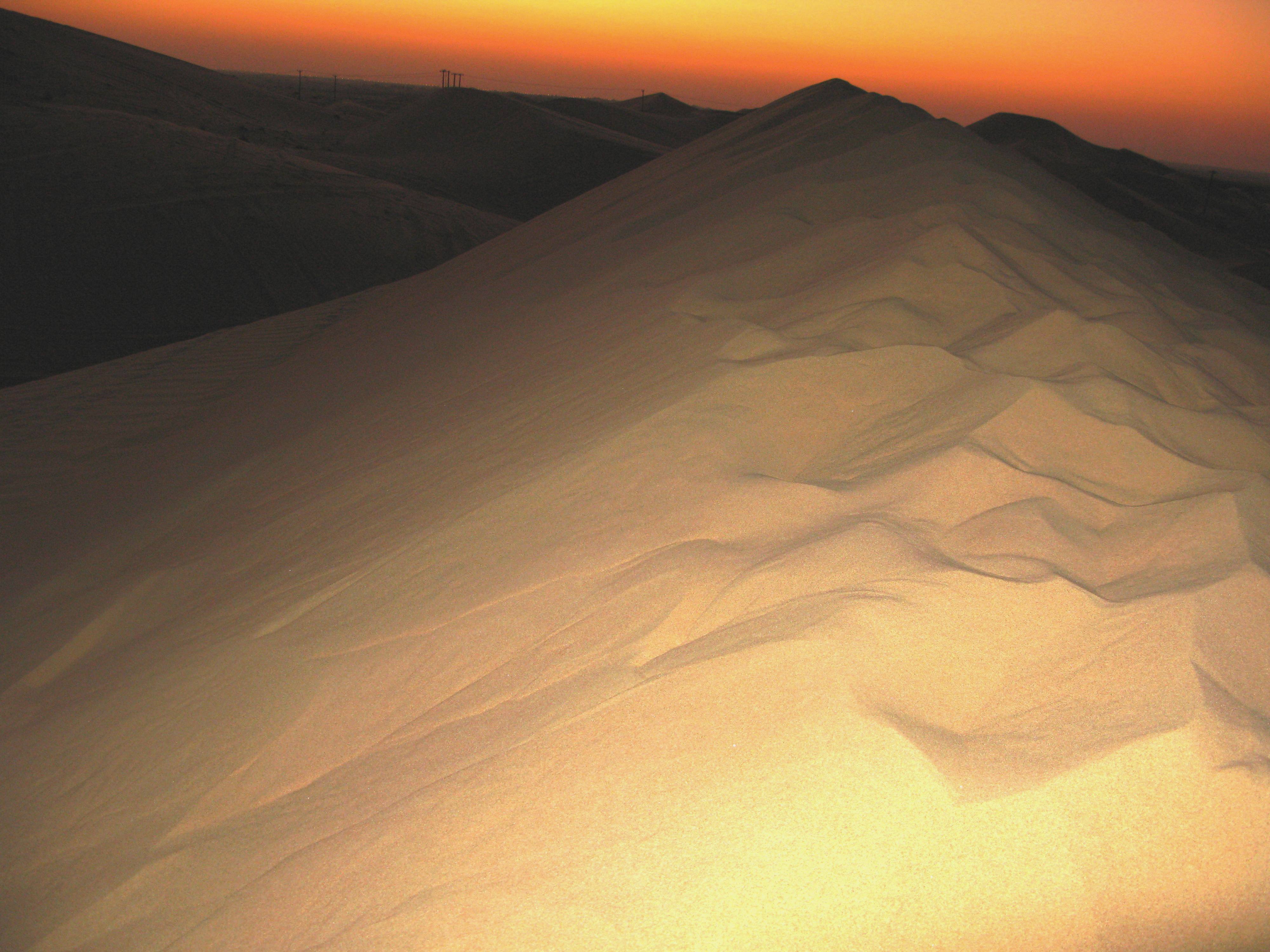
It is an ancient belief endorsed in Biblical writings that names of children should be chosen carefully – for the name defines the life.
I never chose it to be this way, but as it turned out, I have had a very Bedouin life.
More Emirates pages:
Abu Dhabi
Dubai Pages
Pages on Doha
